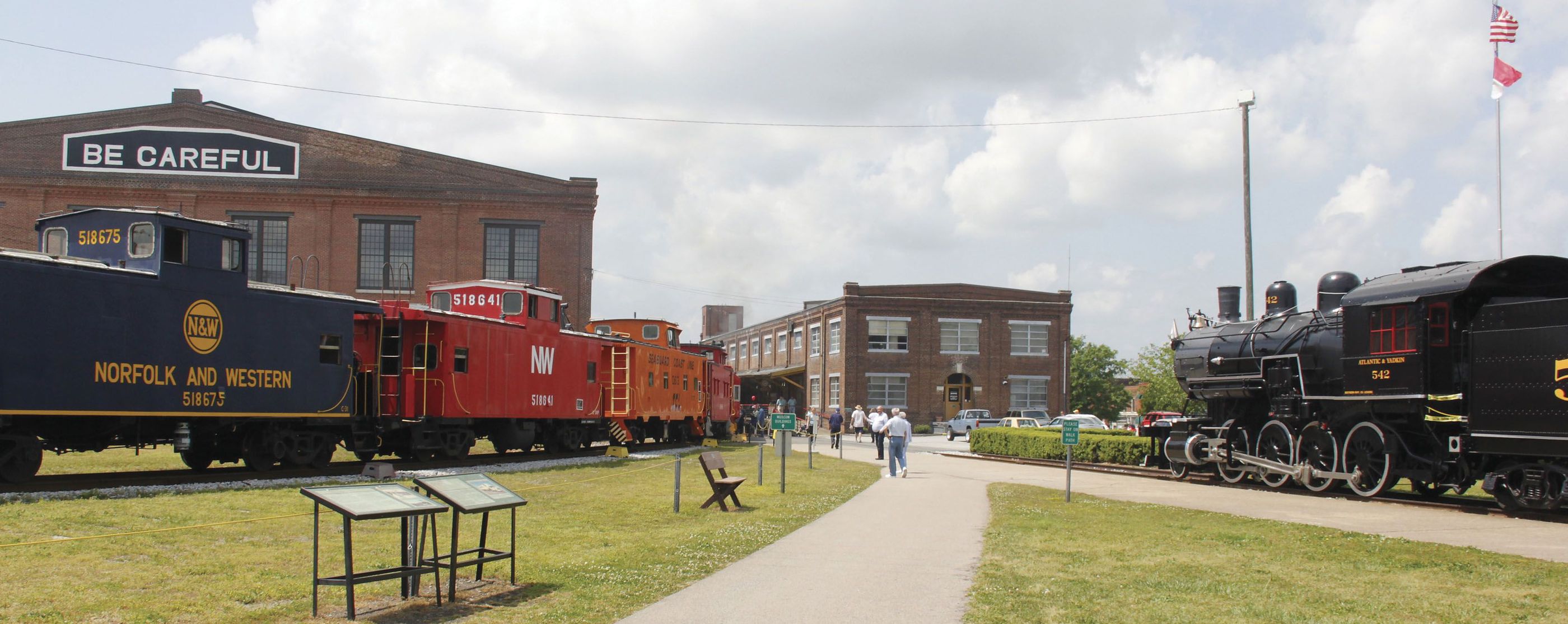A day in the life of the NC Transportation Museum
Published 12:00 am Tuesday, January 21, 2014
It was 1 p.m. on Saturday at the North Carolina Transportation Museum in Spencer. I was leaving the Back Shop for the Master Mechanic’s Office. Despite the cold, I couldn’t help but notice that the place was hopping!
A family, bundled up, ducked into the gift shop. Another family, pushing a stroller, was coming from the Visitor’s Center at the Barber Junction Depot, where museum staffer LeAnne Johnson greeted the public and sent them out on their adventure. She would be meeting with the officers of the antique tractor club later in the afternoon to help plan one of their events.
“We’re from Charlotte,” a father told me when I asked. A young mother, her baby wrapped in blankets with only a pink face showing, said “Winston-Salem.” The folks crouched over the children playing with toy trains had to be grandparents. The teenage gift shop volunteers kept the shelves straight while answering the visitors’ questions.
I had just left about a dozen men, aviation volunteers, behind me in the Back Shop. They were crouched beneath a wing of the Piedmont Airlines DC-3. Pieces of the plane surrounded them in orderly fashion. They were deep in restoration, hanging around their friends, doing their hobby, and having fun. It was the best kind of camaraderie. David Byrd, volunteer aviation restoration project manager, assured me that there were sheet metal workers, and then there were sheet metal workers. “Artists,” he said. I agreed.
Auto volunteer Dick Goho had returned the 1935 Highway Patrol car to the Back Shop, I noticed. He and other auto volunteers had driven it that morning in Salisbury’s Martin Luther King Jr. Parade. Dick and Chloe Goho chose to retire in Rowan County a few years ago just because of the volunteer opportunities at the Transportation Museum. They can be found onsite most days helping with whatever needs to be done.
I then joined museum staffers J.R. Ayash and Brett Howe. They had just checked on the footings poured last week for the new signal exhibit being installed along the walk to the Barber Junction Depot. They were heading to help unload a flight simulator. The Carolina’s Aviation Museum in Charlotte was giving the old piece of training equipment to the North Carolina Transportation Museum.
Former NCTM Foundation President Roy Johnson was there to help with the unloading. Bill Wilkerson, the second African American to attain the rank of captain in an airline and yet another museum volunteer, peered into the open simulator window.
“This is something else,” he hummed.
He should know. He has spent many hours inside of simulators teaching a lot of budding pilots.
Across the way in the Roundhouse classroom, the Concord Modelers were holding their monthly meeting. Two slow cookers in the back of the classroom sent the smell of chili through the space, and four small buildings, examples of an expert modeler’s work, graced a table at the front of the room.
Wayne Schmitt, yet another museum volunteer and a member of the club, told me that the maker of those model buildings had passed away recently.
“He would lead workshops and show us how to do that kind of work. He was very talented.”
Such detail. Such tiny detail. Another group of artists, I decided.
Just a few steps away, the Roundhouse restoration bays hummed. Rail volunteers were everywhere. Guys buffed some sort of anti-oxidation compound onto the sides of “The Combine,” a special combination passenger and baggage car. Noah Bimrose who regularly drives in from Raleigh with his dad and fellow volunteer John, explained how a filler compound works.
“Like Bondo?” I asked, and he just nodded, “Yeah. You can think of it that way, if you want.” I have a lot to learn, I told him.
He was patient with me and went on to explain what the men about him were doing. It was a lot of detail about paint and rust and rot and specialized tools.
Another group of men put finishing touches on a caboose paint job. Yet another group worked on the signals that will soon stand on those footings recently poured.
I probably won’t ever learn much of this, I decided as other volunteers came up to educate me about what they were doing on this particular cold Saturday. But it was warm enough in the restoration bays. Volunteer “Mr. Speight” — I call him that because he calls me Mr. Cherry — and I re-run our genealogical conversation that we keep going. “There are a lot of Speights,” we agree.
Josh from Kannapolis explained to me that he had been coming to the museum since he was 4. The teenager rarely misses a Saturday among the trains and his buddies.
I was going to talk to museum staffer Robert Sturdivant in the Roundhouse Orientation Gallery, but he was busy talking with another group of visitors, so I waved in his general direction and kept walking. I needed to find Kelly Alexander, chief operations officer for the North Carolina Transportation Museum Foundation, to continue planning a museum special event. But sometimes, I decided, your average freezing cold Saturday in Spencer is awfully special — thanks to all those folks who keep the museum hopping!
Kevin Cherry is deputy secretary of the N.C. Department of Cultural Resources and interim executive director of the N.C. Transportation Museum.






